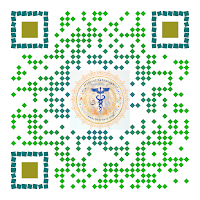Digoxin
(Cardiac glycoside) reversibly inhibits the sodium-potassium-ATPase, causing an
increase in intracellular sodium and a decrease in intracellular potassium. The
increase in intracellular sodium prevents the sodium-calcium antiporter from
expelling calcium from the myocyte, which increases intracellular calcium. The
net increase in intracellular calcium augments inotropy. Cardiac glycosides
also increase vagal tone, which results in decreased conduction through the
sinoatrial and atrioventricular nodes.
Life-threatening
digoxin-induced arrhythmias and other toxic manifestations occur at a substantially
increasing frequency as the plasma digoxin concentration rises above 2.0 ng/mL.
However, toxicity is more likely in the presence of one or more comorbid
conditions (eg, hypokalemia, hypomagnesemia, hypercalcemia, myocardial
ischemia). Hypokalemia is a particularly important risk factor that can promote
digoxin-induced arrhythmias.
PVCs
are often the first sign of digoxin toxicity and are the most common arrhythmia
due to digoxin toxicity. PVCs can be isolated or occur in a bigeminal pattern. The
so-called "digitalis effect" on the ECG consists of T wave changes
(flattening or inversion), QT interval shortening, scooped ST segments with ST
depression in the lateral leads and increased amplitude of the U waves.
Early
recognition of cardiac glycoside toxicity and prompt administration of Fab
fragments is essential for the successful treatment of severe poisoning. Fab
fragments are highly effective and safe and have transformed the management of
cardiac glycoside poisoning.




.jpg)




%20is%20the%20protrusion%20of%20one%20eye%20or%20both%20anteriorly%20out%20of%20the%20orbit.%20Exophthalmos%20used%20to%20refer%20to%20severe%20(18%20mm)%20proptosis.jpg)



.jpg)
,%20especially%20in%20the%20early%20stages.%20When%20present,%20symptoms%20are%20vague%20&%20nonspecific.%20Early%20symptoms%20-%20severe%20fatigue%20(74%25),%20impotence%20(45%25),%20arthralgia%20(44%25).%20Most%20common%20s.jpg)






















